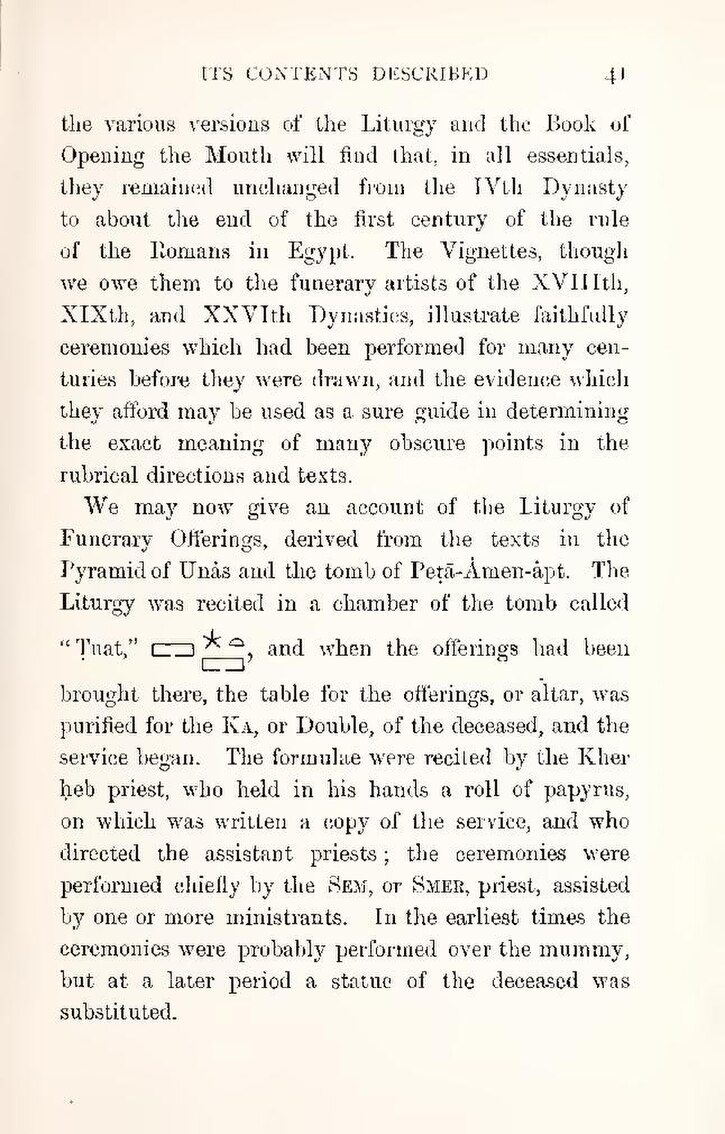the various versions of the Liturgy and the Book of Opening the Mouth will find that, in all essentials, they remained unchanged from the IVth Dynasty to about the end of the first century of the rule of the Romans in Egypt. The Vignettes, though we owe them to the funerary artists of the XVIIIth, XIXth, and XXVIth Dynasties, illustrate faithfully ceremonies which had been performed for many centuries before they were drawn, and the evidence which they afford may be used as a sure guide in determining the exact meaning of many obscure points in the rubrical directions and texts.
We may now give an account of the Liturgy of Funerary Offerings, derived from the texts in Pyramid of Unȧs and the tomb of Peṭā-Ȧmen-ȧpt. The Liturgy was recited in a chamber of the tomb called “Ṭuat,”
| |
, and when the offerings had been brought there, the table for the offerings, or altar, was purified for the Ka, or Double, of the deceased, and the service began. The formulae were recited by the Kher ḥeb priest, who held in his hands a roll of papyrus, on which was written a copy of the service, and who directed the assistant priests; the ceremonies were performed chiefly by the Sem, or Smer, priest, assisted by one or more ministrants. In the earliest times the ceremonies were probably performed over the mummy, but at a later period a statue of the deceased was substituted.
